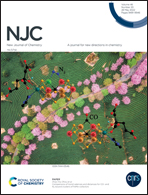F-doped zinc ferrite as high-performance anode materials for lithium-ion batteries†
Abstract
Ferrite materials, although have been widely studied for lithium-ion batteries (LIBs) in recent years, their poor electronic conductivity and serious volume expansion during the lithiation/delithiation process have hindered the improvement of capacity and long-life working. In this study, we have successfully fabricated fluorine-doped ZnFe2O4 (ZFO-F) via a quick quenching method with an ice-cold KF/NH4F solution as quenching media and investigate their electrochemical activity when used as anodes for LIBs. This method not only realizes F doping but also increases the disorder of atoms, which can buffer the volume swelling to a great extent. Simultaneously, quenching causes lattice defects and creates more active sites. As expected, the optimal ZFO-F has the smallest charge transfer resistance, the highest specific capacity of 950 mA h g−1 after stabilization at 0.5 A g−1, and excellent rate performance, up to 312 mA h g−1 at a high current density of 5 A g−1 while it is only 200 mA h g−1 for pristine ZFO without F doping. This method effectively improved the electrochemical performance of ZnFe2O4 and also provided a new avenue for fabricating hetero-atom-doped anode materials.



 Please wait while we load your content...
Please wait while we load your content...